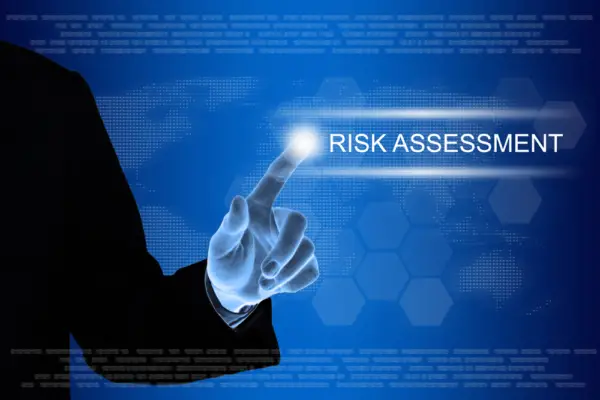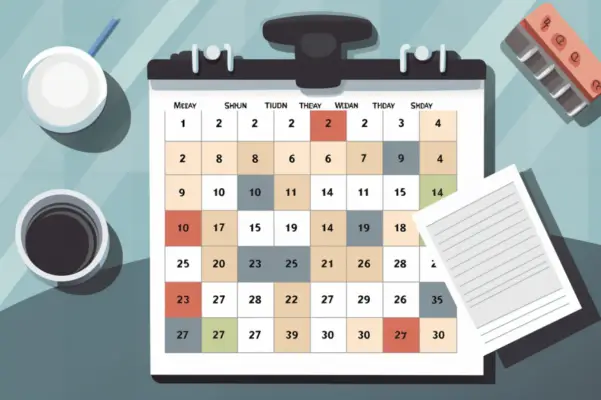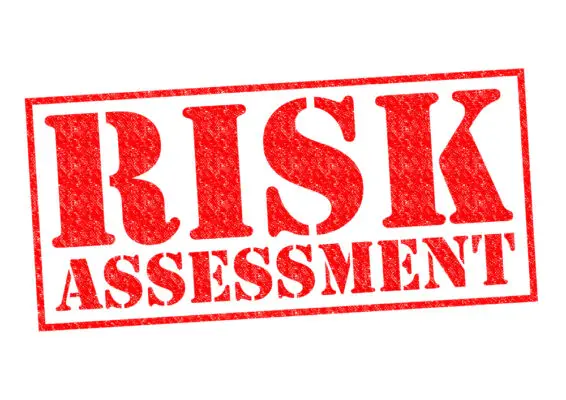In today’s mental health care, suicide risk assessment is vital in identifying individuals at risk of self-harm or suicide. Mental illness causes suicidal behavior in suicidal patients.
This article discusses the challenges and opportunities related to suicide risk assessment and prevention. It explores the neurobiology of suicide, screening methods, and clinical assessment techniques, which can help mental health professionals better understand the factors contributing to suicidal ideation and behaviour.
The objective of suicide risk assessment is to accurately identify individuals at heightened risk, allowing for timely intervention and prevention strategies.
This article also emphasizes the importance of suicide prevention efforts in reducing the global burden of suicide.
This article also offers a thorough exploration of the role of suicide risk assessment in modern mental health care, while also recognizing the importance of empathy and compassion when addressing this sensitive and potentially life-threatening issue.

Suicide Risk Assessment and Prevention: Challenges and Opportunities
Examining challenges and opportunities in suicide risk assessment and prevention reveals the complexities and potential for improvement in current mental health care practices.
Suicide risk assessment is crucial in identifying individuals at risk for suicide and implementing appropriate interventions. However, it is a complex task that requires careful consideration and analysis of various factors.
Many factors, including psychiatric disorders, previous suicide attempts, and social circumstances influence the risk of suicide. Mental health care providers must be knowledgeable about the warning signs and risk factors associated with suicidal behaviour and be able to assess these accurately.
Although standardised tools are available to aid in suicide risk assessment, clinical judgment remains essential in determining the level of risk.
Incorporating comprehensive suicide risk assessment protocols into the mental health services administration can help improve the accuracy and effectiveness of suicide prevention efforts.
Neurobiology of Suicide
Neurobiological factors play a significant role in understanding suicidal behaviours. Identifying these factors is crucial to develop effective suicide prevention strategies and providing appropriate mental health services to those at risk.
Rates of suicide have been steadily increasing, highlighting the urgent need to address this issue. Research has shown that individuals who are suicidal exhibit distinct neurobiological patterns, such as alterations in brain function and neurotransmitter imbalances.
Understanding these neurobiological underpinnings can inform the development of targeted interventions, such as dialectical behaviour therapy, which has shown promising results in reducing suicide rates.
The National Institute of Mental Health recognizes the importance of studying the neurobiology of suicide and has dedicated significant resources to fund research in this area.
Through the examination of neurobiological mechanisms related to suicide, mental health professionals can play a role in preventing suicide and enhancing the well-being of individuals who are at risk.
Screening for Suicide Risk
Efficient and accurate screening methods are crucial in identifying individuals at heightened risk of self-harm, enabling timely intervention and support.
Healthcare providers play a vital role in conducting suicide risk assessments for patients with mental illness. Screening tools, such as questionnaires or interviews, can be used to identify patients at risk.
These tools are often integrated into the electronic health record system, allowing for systematic and consistent screening across healthcare settings.
Screening for suicide risk not only promotes patient safety but also provides an opportunity for healthcare professionals to develop appropriate management strategies. It allows for identifying warning signs and risk factors, facilitating tailored interventions and support for those at risk.
Healthcare providers can improve suicide prevention and support patients’ recovery by implementing comprehensive screening protocols.
Clinical Assessment of Suicide Risk
This discussion will explore the clinical assessment of suicide risk, specifically focusing on the key points of suicidal risk assessment within the context of a psychiatric evaluation.
The assessment involves exploring a patient’s psychiatric history, including previous suicide attempts or self-harm behaviours, and gathering information about their family history of suicide or mental health issues.
Additionally, it is important to assess for psychosocial stressors and supports that may contribute to the patient’s current suicidal ideation.
BOX 1. Suicidal risk assessment in the Context of the psychiatric evaluation
Suicidal risk assessment plays a crucial role in the comprehensive psychiatric evaluation, allowing for a thorough examination of an individual’s current mental state and the potential for self-harm or suicide.
Mental health providers employ a standardized approach to assess suicide risk, adhering to the standard of care. This involves utilizing validated screening tools and conducting a detailed interview to identify warning signs, risk factors, and protective factors.
The assessment includes an evaluation of the severity of suicidal ideation, the presence of a plan and intent, access to lethal means, and the individual’s support network.
Mental health resources are then mobilized based on the level of risk identified. These resources may include crisis intervention, therapy, medication management, or referral to specialized services.
Universal screening for suicide risk is crucial to ensure participant safety and promote early intervention.
Explore Psychiatric History
One important aspect of the psychiatric evaluation involves delving into the individual’s psychiatric history, where a comprehensive understanding of their past mental health experiences can be gained.
This exploration allows clinicians to identify potential risk factors for suicide and tailor interventions accordingly.
According to the Centers for Disease Control and Prevention (CDC), suicide rates have steadily increased in the United States, making suicide risk assessment crucial in mental health care.
Research studies, such as those conducted by the Department of Veterans Affairs and published in the American Journal of Public Health and JAMA Pediatrics, have highlighted the significance of psychiatric history in predicting suicide risk.
In reviewing past mental health diagnoses, treatment histories, hospitalizations, and suicide attempts, clinicians can identify patterns and factors contributing to an individual’s risk for suicide.
This information can inform treatment plans and help prevent future suicidal behaviour.
Suicide Risk—Use Earlier Information as a Segue Into Questioning About Suicidal Ideation
Clinicians can discuss suicidal thoughts and their potential consequences by reviewing a person’s mental health records.
Suicide risk assessment is vital in today’s mental health care, as identifying and addressing suicidal ideation is crucial for preventing suicides.
By reviewing an individual’s psychiatric history, clinicians can gain valuable insights into their mental health, including any previous suicide attempts, hospitalizations, or diagnoses of mood disorders.
This information provides a foundation for questioning suicidal ideation, allowing clinicians to ask targeted and sensitive questions that can uncover potential risk factors.
Clinicians can establish rapport and create a safe and non-judgmental environment by incorporating earlier information into the conversation, encouraging individuals to discuss their thoughts and feelings openly.
This collaborative approach enhances the accuracy of suicide risk assessment and facilitates appropriate interventions to ensure the safety and well-being of individuals experiencing mental health challenges.

Family History
Examining an individual’s family history can provide valuable insights into their mental health and potentially evoke a sense of concern or curiosity in the audience. Family history is important when assessing suicide risk, as mental health issues can often run in families.
The Joint Commission, a leading healthcare accreditation organization, emphasizes the significance of family history in suicide risk assessment. Research studies, such as those conducted by the National Academies Press and the Journal of Urban Health, have found a strong association between a family history of mental illness and increased suicide risk.
Additionally, the Department of Justice and the Bureau of Justice Statistics have recognized the link between family history and suicide risk, particularly in gun violence cases.
Considering family history can aid in identifying individuals who may benefit from increased support and intervention, while also highlighting the importance of gun control measures to prevent suicide.
Psychosocial Stressors and Supports
Psychosocial stressors and supports are crucial in understanding the factors contributing to an individual’s mental well-being and resilience. Various psychosocial stressors, such as financial difficulties, relationship problems, and work-related stress, can significantly impact a person’s mental health.
On the other hand, social supports, such as strong interpersonal relationships, access to mental health services, and community resources, can act as protective factors and enhance an individual’s mental well-being.
To further illustrate the importance of psychosocial stressors and supports, the following table provides examples of different stressors and corresponding support strategies:
Understanding and addressing psychosocial stressors and supports are essential in suicide risk assessment and mental health care. By identifying stressors and implementing appropriate support strategies, mental health professionals can help individuals build resilience and reduce the risk of suicide.
It is crucial to incorporate training strategies based on evidence from research studies, such as those published in the Journal of Criminal Justice and supported by organizations like the National Institute of Justice and the Gun Safety Support Fund.
Collaboration between mental health professionals and other stakeholders, such as the criminal justice information services division, can contribute to comprehensive injury prevention and mental health promotion efforts.
Suicide Prevention
Suicide prevention is a critical aspect of mental health care that requires comprehensive risk assessment strategies. Identifying individuals at risk for suicide is crucial in order to provide appropriate interventions and support.
To effectively prevent suicide, mental health professionals must employ evidence-based practices that include assessing suicidal ideation, intent, and plans.
Additionally, it is essential to evaluate protective factors such as social support, access to mental health services, and coping skills.
In recent years, there have been significant efforts to address suicide prevention through various initiatives. These include:
– Increased funding for suicide prevention programs and research.
– Implementation of community-based interventions aimed at reducing suicide rates.
– Advocacy for stricter gun control laws to prevent firearm-related suicides, supported by organizations like the Giffords Law Center to Prevent Gun Violence.
Incorporating these strategies and considering multiple factors, mental health care providers can play a vital role in preventing suicide and promoting overall well-being.
Journals on Suicidal Prevention and Mitigation
In addition to the aforementioned journals and publications in health research, several other notable academic journals cover various topics in various fields. For instance, the Journal of the American Medical Association (JAMA) is a prominent outlet for medical research, covering numerous specialities such as internal medicine, paediatrics, and psychiatry.
The Journal of Criminology focuses on research related to crime, criminal behavior, and criminal justice systems. This supports the U.S. Department of Justice and the Justice quarterly. The American Journal of Public Health publishes articles on public health issues, including epidemiology, policy analysis, and health promotion.
These journals, among many others, provide valuable insights and contribute to advancing knowledge in their respective fields.
Injury epidemiology is a field that focuses on understanding the patterns and causes of injuries in populations. It involves studying the incidence, prevalence, risk factors, and outcomes of various injuries resulting from accidents, violence, and self-harm. This field plays a crucial role in informing public health interventions and policies to reduce the burden of injuries on individuals and society.
JAMA Network Open is a peer-reviewed medical journal that publishes research across a wide range of medical disciplines. It provides a platform for researchers to share their findings on clinical medicine, public health, and health policy topics. The journal aims to advance medical knowledge and improve patient care through evidence-based research and analysis.
Tobacco Control is a leading international journal that focuses on the prevention and control of tobacco use. It covers various aspects of tobacco control, including public health policies, smoking cessation interventions, tobacco industry practices, and the impact of tobacco use on health and society.
The journal publishes research articles, reviews, and commentaries to disseminate knowledge and promote evidence-based strategies for reducing tobacco-related harm.
Criminology and Public Policy is a peer-reviewed journal that publishes research on crime, criminal behavior, and public policy responses to crime and criminal justice. It examines the causes and consequences of crime and the effectiveness of various interventions and policies aimed at preventing and reducing crime. The journal aims to bridge the gap between academic research and policy-making by providing evidence-based insights to inform crime prevention strategies.
American Economic Journal: Economic Policy is a prestigious academic journal that publishes research on economic policy issues. It covers a wide range of topics, including fiscal policy, monetary policy, labor markets, health policy, education policy, and environmental policy. The journal publishes rigorous empirical studies and theoretical analyses to inform economic policymaking and enhance our understanding of the impact of different policies on economic outcomes.
American Economic Review is one of the world’s oldest and most influential economics journals. It publishes research on various aspects of economics, including microeconomics, macroeconomics, economic theory, econometrics, and applied economics. The journal publishes original research articles, surveys, and theoretical papers that advance economic knowledge and understanding.
International Review of Law and Economics is an interdisciplinary journal that explores the intersection of law and economics. It publishes research on various legal and economic issues, such as the economic analysis of legal rules, the impact of legal institutions on economic outcomes, and the economic analysis of legal disputes.
The journal aims to foster a deeper understanding of the complex relationship between law and economics and its implications for policy-making and legal decision-making.
Frequently Asked Questions
What are the main challenges faced by mental health professionals in conducting suicide risk assessments?
Mental health professionals face several challenges when conducting suicide risk assessments. These include limited training in suicide assessment, difficulties in accurately predicting suicide risk, and the need to balance patient confidentiality with the duty to protect individuals at risk.
How does the neurobiology of suicide contribute to our understanding of suicidal ideation and behaviour?
The neurobiology of suicide provides valuable insights into the underlying mechanisms of suicidal ideation and behaviour.
Researchers can identify potential risk factors by studying brain regions, neurotransmitters, and genetic factors and develop more effective prevention and intervention strategies.
What screening tools are available for identifying individuals at risk of suicide?
Several screening tools are available to identify individuals at risk of suicide, such as the Columbia-Suicide Severity Rating Scale (C-SSRS) and the Suicide Ideation Questionnaire (SIQ). These tools aid in the early detection and intervention of suicidal ideation and behaviour.
Can you provide some examples of the specific questions asked during a clinical assessment of suicide risk?
During a clinical assessment of suicide risk, specific questions may include inquiring about suicidal thoughts, plans, intentions, previous attempts, access to lethal means, social support, and psychiatric history. These questions aim to identify individuals at risk and guide appropriate interventions.
What are some effective strategies and interventions for suicide prevention?
Effective strategies and interventions for suicide prevention include providing mental health education and awareness, implementing crisis helplines and support services, promoting access to mental health treatment, and fostering support networks and social connections for individuals at risk.

Conclusion
Suicide risk assessment is crucial in today’s mental health care system.
Through the study of the neurobiology of suicide and the implementation of effective screening and clinical assessments, healthcare professionals can identify individuals at risk and offer the necessary support and intervention.
Suicide prevention efforts are crucial in saving lives and reducing the devastating impact of suicide on individuals, families, and communities.
With continued research and a comprehensive approach to suicide risk assessment, we can work towards a future where mental health care is proactive, empathetic, and effective in preventing suicide.

Chris Ekai is a Risk Management expert with over 10 years of experience in the field. He has a Master’s(MSc) degree in Risk Management from University of Portsmouth and is a CPA and Finance professional. He currently works as a Content Manager at Risk Publishing, writing about Enterprise Risk Management, Business Continuity Management and Project Management.

